The Johns Hopkins University Applied Physics Laboratory (APL) has published a project of the Interstellar Explorer — a probe designed to study the far reaches of the Solar System. If approved, the mission would launch in the second half of the 2030s and travel almost three times farther from the Sun than the legendary Voyager probes.
Researchers of the far reaches of the Solar System
Today, there are three spacecraft in the solar system that explore its far reaches. These are a pair of Voyager probes, as well as the New Horizons probe. Unfortunately, in the near future they will stop working due to running out of their radioisotope thermoelectric generators (RITEGs).
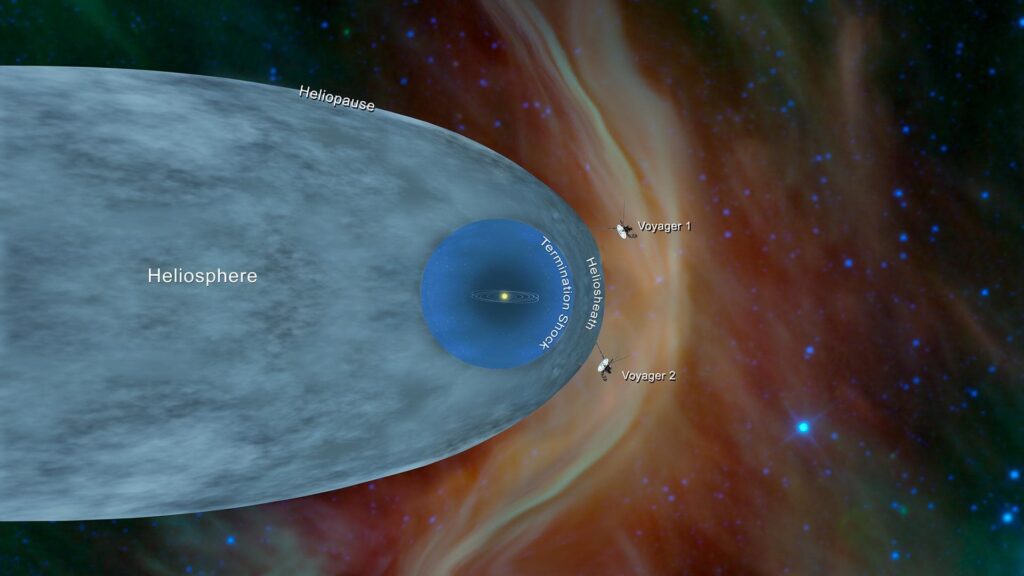
According to the latest estimates, the Voyager has about five years left in reserve, after which the RITAGs will no longer have enough energy to support the operation of any scientific instruments onboard. As for the New Horizons, it is expected to be able to stay in touch until sometime in the mid-to-late 2030s. However, since the spacecraft is moving at a slower speed than Voyager, it simply will not reach interstellar space before it stops working.
So, by the end of the next decade, humanity will lose all its “eyes and ears” on the edge of the solar system. In order to fill this coming gap, a team of engineers at APL (which once developed the New Horizons in its bowels) proposed a very ambitious project for a specialized probe designed to study the heliosphere (so we call the region where the plasma emitted by the Sun prevails) and interstellar space.
How to speed up the Interstellar Probe
The main problem associated with the Interstellar Probe project lies in its flight time. It took 35 years for Voyager-1 to get outside the heliosphere. With such a flight time, by the time the Earth messenger reaches interstellar space all its developers will have already retired, in the best case.
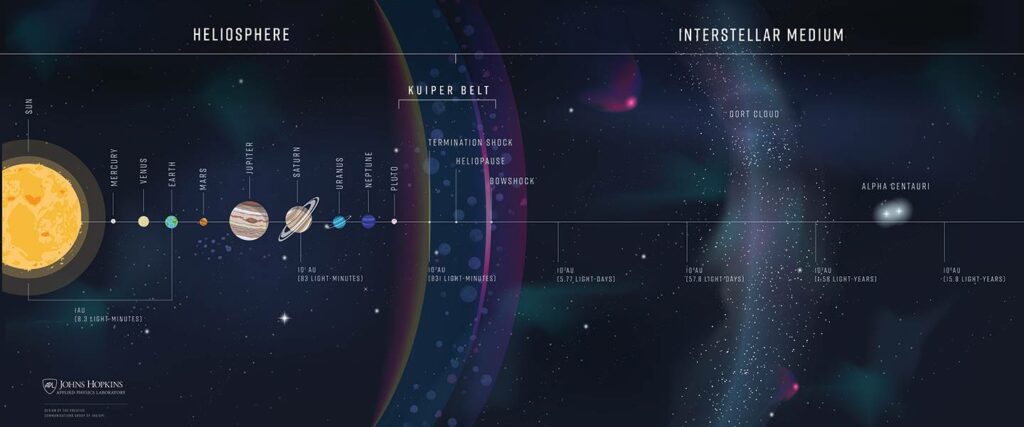
To cope with this problem, the authors of the project proposed to use a combination of the SLS superheavy rocket in its most powerful Block 2 configuration (expected to be put into operation after 2029) and the gravity of the largest planet in the Solar System. The flight plan developed by APL envisages the launch of the probe in 2036, followed by a Jupiter flyby for additional acceleration. This will allow the device to be sped up to approximately 7.2 astronomical units (1.08 billion km) per year. For comparison, Voyager 1 moves away from the Sun with the speed of 3.5 AU every year (0.52 billion km). At such a pace, the probe will reach the interstellar space in about 17 years.
Scientific goals of the Interstellar Probe
The Interstellar Probe should provide answers to three main questions:
- What is the general nature of the heliosphere?
- How do the Sun and our galaxy affect the dynamics of processes in the heliosphere?
- What is the nature and characteristics of the nearest interstellar space?
Among the additional tasks of the mission is also the search for an answer to the question of the connection of the astrospheres (analogues of heliospheres in other stars) and the potential viability of planetary systems. The interstellar probe will also be able to conduct scientific measurements of Jupiter and other objects in the Solar System, passed by.
The design of the Interstellar Probe
The APL project involves the construction of an apparatus with a total mass of 860 kg (this can be compared to the mass of the Voyager probes), which receives energy from two RITEGs. To maintain communication with the Earth, a 5-meter antenna will be used, capable of providing a data transfer rate of 10 megabits per week at a distance of 1,000 AU — providing building of powerful radio telescopes of the next generation on Earth.
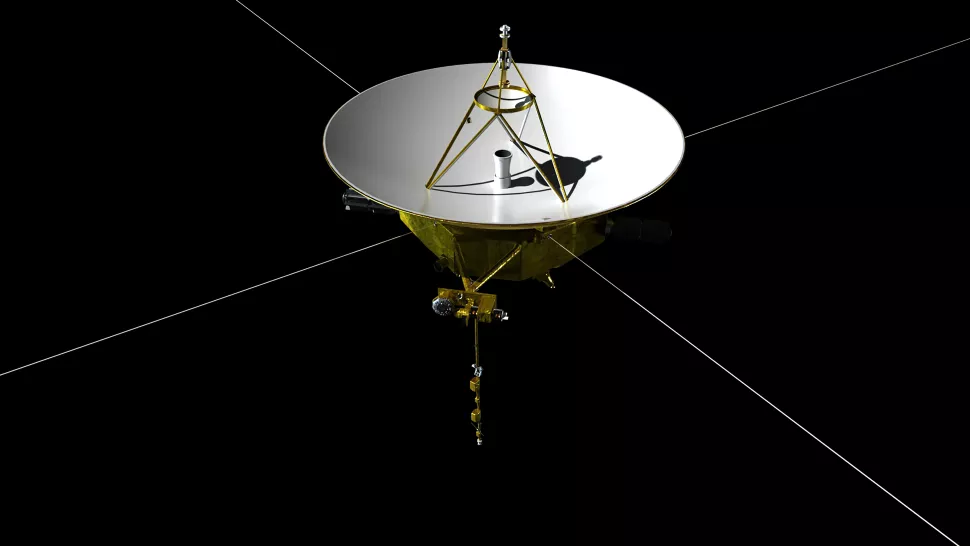
The probe’s scientific payload will consist of ten scientific instruments, divided into six main blocks. Among them are a spectrograph, spectrometer, magnetometer, devices for studying charged particles, galactic rays and interstellar dust.
The estimated lifetime of the Interstellar Probe should be at least 50 years. During this period it will cover a distance of almost 400 AU (60 billion km). For comparison, the already mentioned Voyager-1 is now at a distance of 157 AU (23.5 billion km) from the Sun. At the same time, the authors of the project believe that the probe will be able to last much longer and maintain its performance at a distance of about 1000 a. at. (150 billion km).
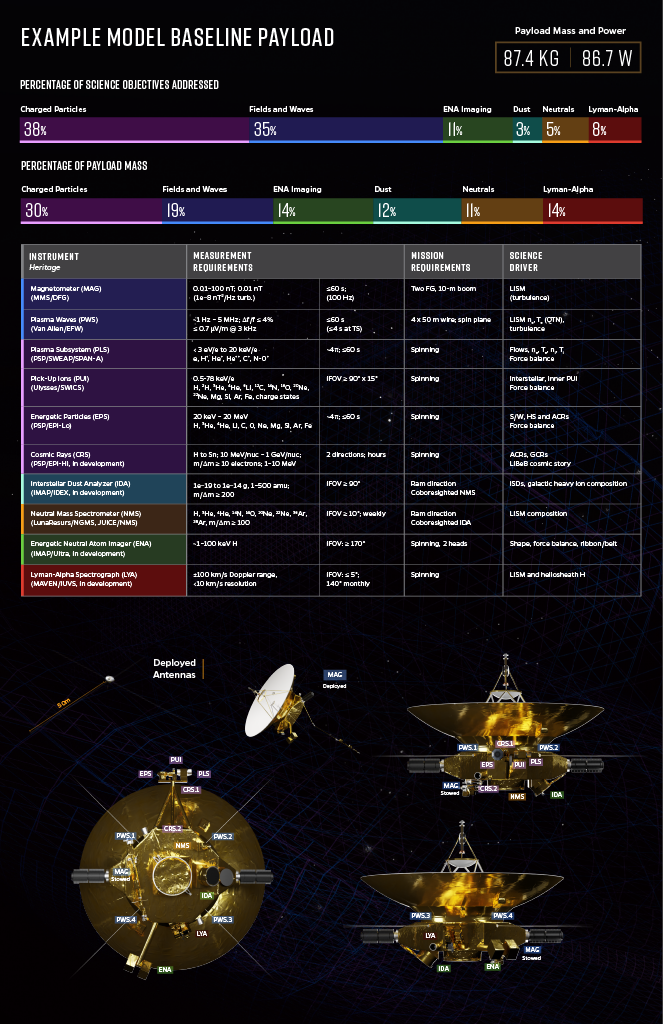
According to APL, the cost of implementing their project will be $1.67 billion, excluding launching costs. Maintaining the Interstellar Probe will cost NASA $230 million per decade.
Prospects of the Interstellar Probe
We should understand that for now it is only a prospective project. It may eventually get the green light from NASA or be shelved. Unfortunately, latter was the fate of several of its predecessors, such as the TAU (Thousand Astronomical Units) project.
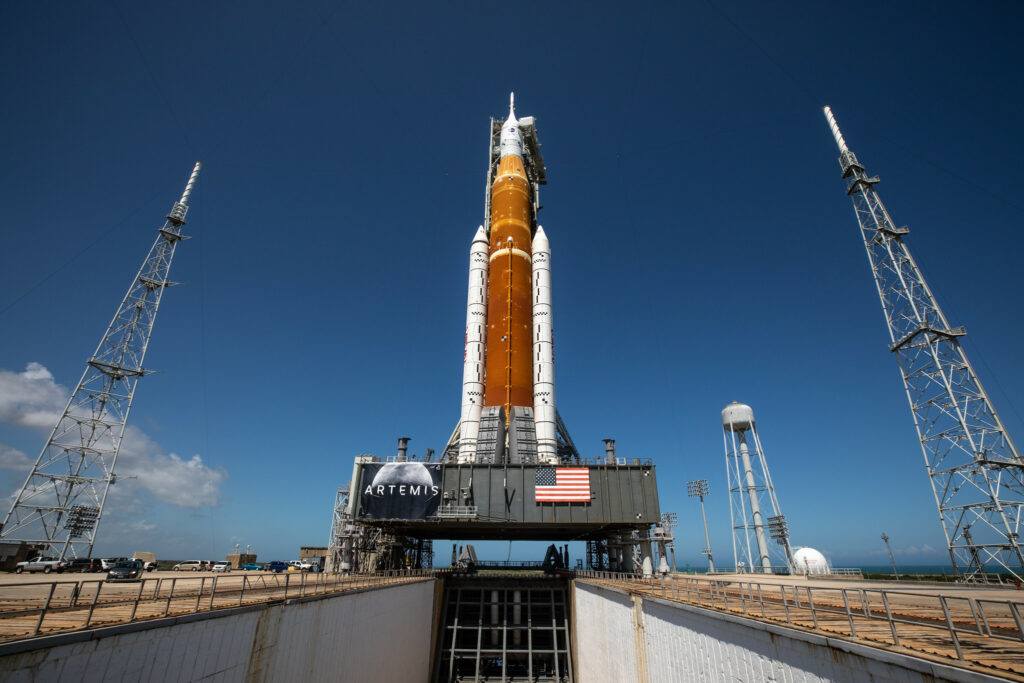
Two key issues that could hinder the implementation of the Interstellar Probe concept are related to the SLS rocket and RITEGs. The fact is that SLS is a very expensive carrier. The cost of its launch is estimated at 2 billion dollars, which exceeds the cost of an Interstellar Probe itself. So far, there is no guarantee that NASA will concede such expenses. In addition, all SLS launches until the end of the decade are currently under the Artemis program. Theoretically, the authors of the project would agree to use some cheaper rocket. But it will significantly decrease the speed.
Another problem is related to RITEGs. Now NASA is experiencing a shortage of plutonium-238, which feeds them. The US has recently resumed production of this isotope, but it will take time to build up a significant stockpile.
But, despite all the circumstances listed above, the authors of the project are optimistic about the prospects for its implementation. According to them, the Interstellar Probe is capable of changing our understanding of the solar system and the surrounding space. As well it might become the first humanity’s on the way to the nearby stars.
